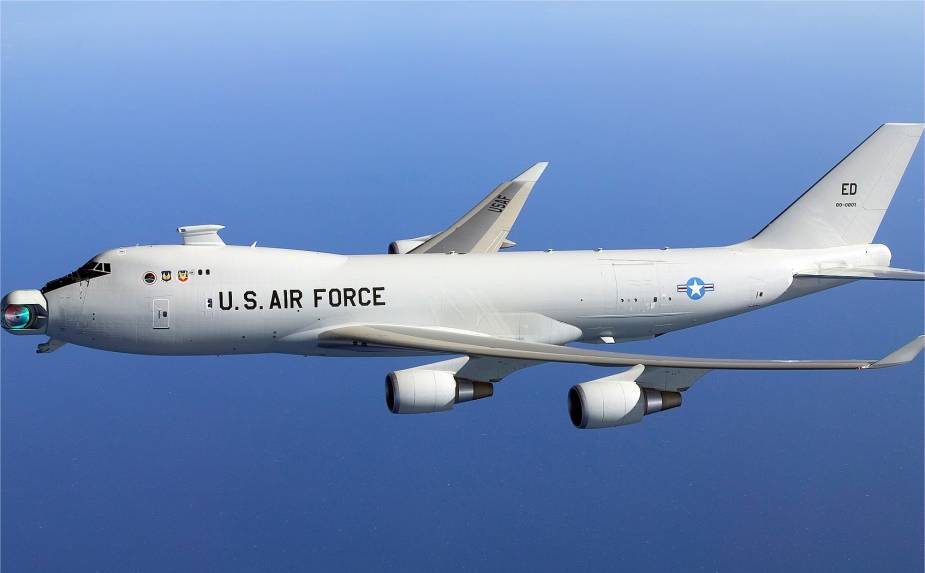Analysis: Global military power of laser weapons Part 2
All military forces have launched programs to develop laser weapons mounted on combat vehicles, vessels or aircraft. Directed energy and laser weapon systems are a proven solution that effectively addresses tech-driven threats with more accurate, flexible and affordable performance than offered by traditional ballistics. Today, laser weapons are one of the more efficient solutions to counter drone threats which are now deployed on the modern battlefield to conduct combat missions.
Follow Army Recognition on Google News at this link

YAL-1A Airborne Laser in flight with the mirror unstowed. (Picture source United States Missile Defense Agency)
In 2002, United States has launched a project to implement the project onboard experimental Boeing YAL-1A (created on the basis of 747-400 °F airlifter). The combat laser weighing close to 300 tons included a megawatt chemical oxygen-iodine laser and three auxiliary (10KW each) units to illuminate the target. Several imitation tests in 2010 were followed by laser trials in flight to destroy solid and liquid-fuel ballistic missiles at the acceleration stage. Despite the declared success, the project was closed because of a lack of financing. The flying YAL-1A laser cost 5 billion dollars and each new aircraft would cost 1.2 billion. Plus, it had to be escorted by numerous fighter jets.
In April 2019, the research laboratory of the US Air Force held ground trials of the Demonstrator Laser Weapon System (DLWS) which is currently used by the US army. It successfully hit several air-to-air missiles during trials. SHiIELD and DLWS generate several dozen kilowatt against the target.
The United States develops combat lasers for the Navy and Ground Forces. Two years ago, Stryker combat vehicle with a 5KW Mobile Expeditionary High Energy Laser (MEHEL) hit a small drone at the German range in Grafenwoehr. The US Navy tested a laser on the Ponce amphibious transport dock in the Gulf at the time. The design of the laser with a small generator took seven years. The cost is 40 million dollars and one shot reportedly costs one dollar.
Lockheed Martin announced the first contract with the Pentagon for the supply of integrated high energy HELIOS lasers. The first two are to be delivered in 2020. One will go to an Arleigh Burke-class destroyer. HELIOS combines a high energy laser gun to down drones and sink boats, a long-range reconnaissance and monitoring system, and a device to destroy optical systems.
Russia cannot afford such costs with unclear prospects. The country faces a pragmatic task to use lasers of current technologies. They can destroy adversary optics and small objects. The latest Peresvet lasers went on combat duty on December 1, 2019. They have to destroy optical devices of adversary spacecraft and their components.The one-megawatt capacity is sufficient for the mission and for the destruction of small air, sea and ground targets.
The design of a flying laser resumed in November 2012. Four years later the flight trials of Sokol-Echelon laser of Almaz Company and Khimprom-avtomatika Design Bureau in Voronezh began onboard A-60 flying laboratory. The work is ongoing.
The laser of Radioelectronic Technologies (KRET) Concern to protect Mi-28N helicopter gunships against manpads is another guideline of combat lasers. The laser is a part of the onboard defense and can simultaneously suppress at least two attacking missiles. Lasers are likely to be installed on MiG-35 fighter jets of generation 4++ and the fifth-generation Su-57 which is the first jet in the world equipped with a miniature system to destroy infrared means of air-to-air missiles. Previously, such systems were carried only by airlifters because of the big size. Today lasers are installed on strategic, tactical airplanes and helicopters.




























